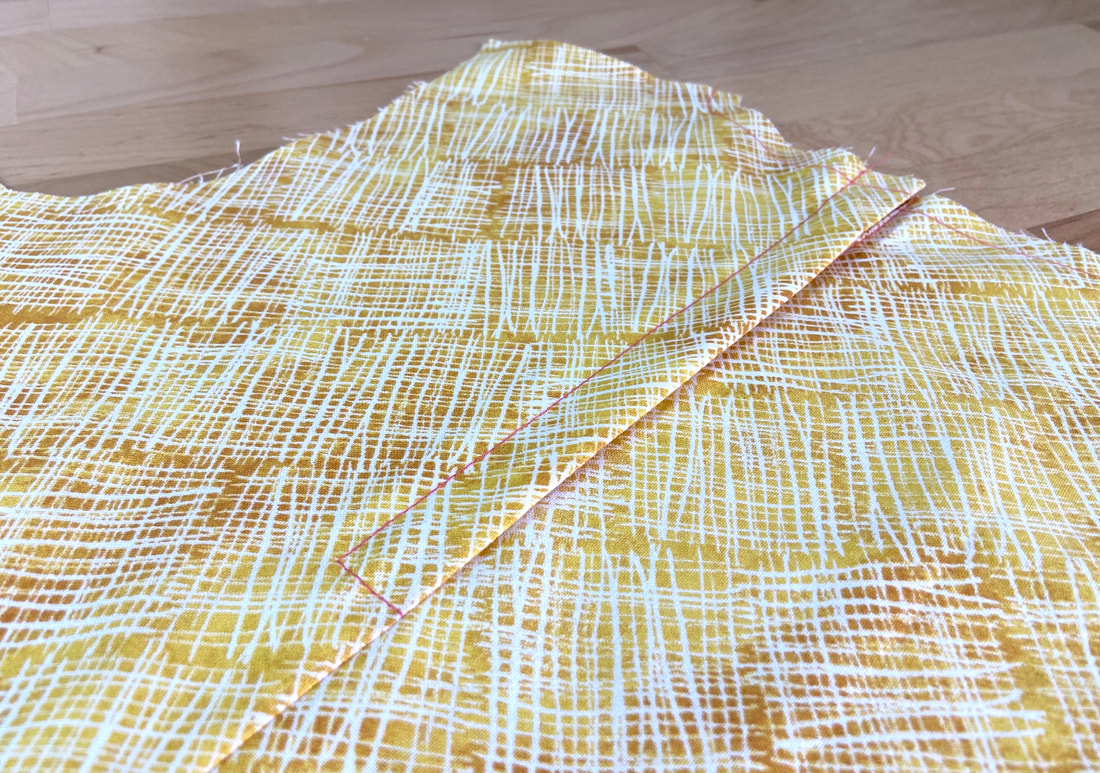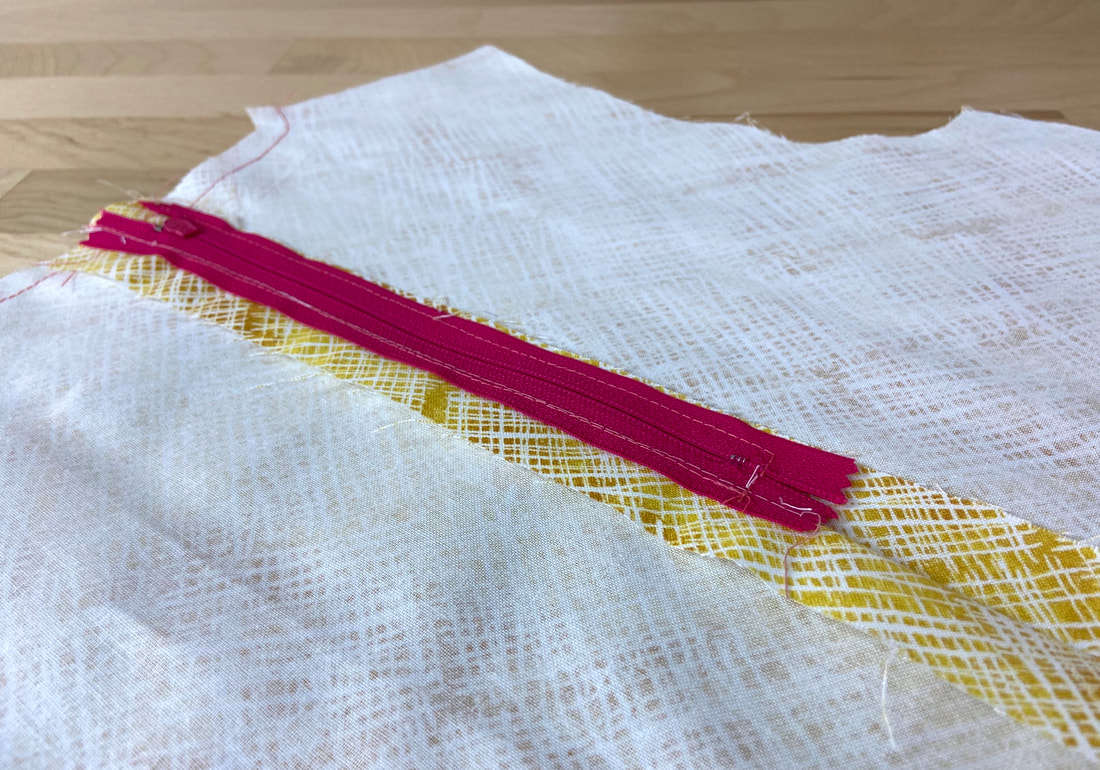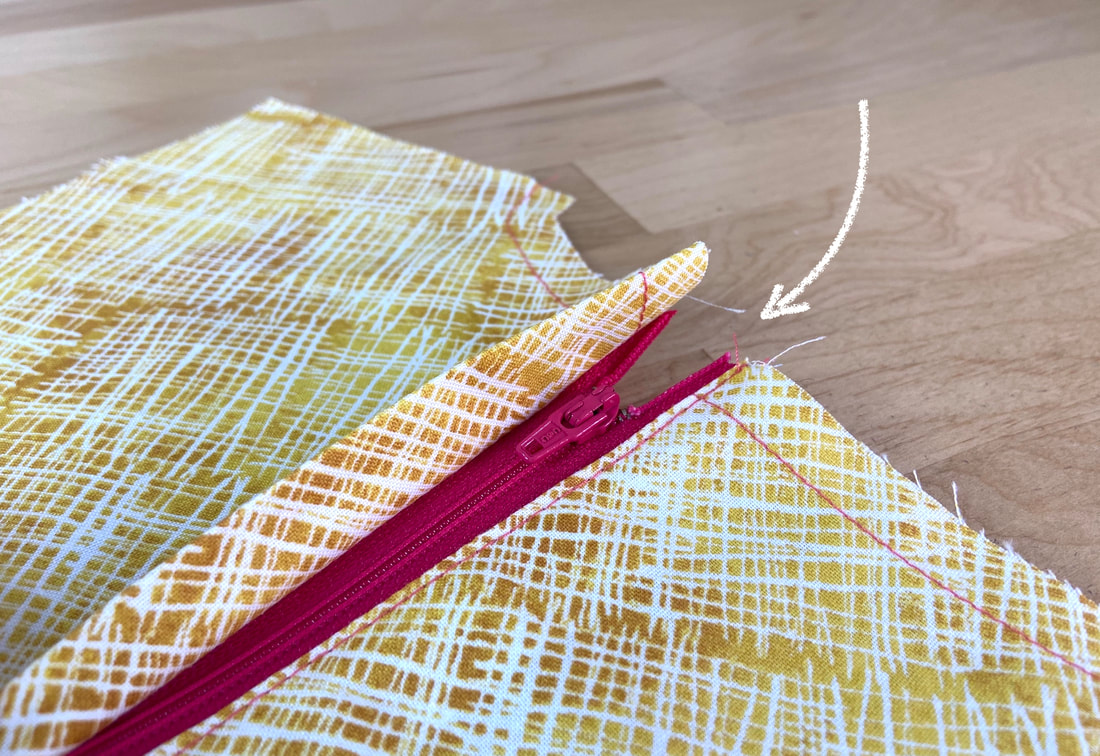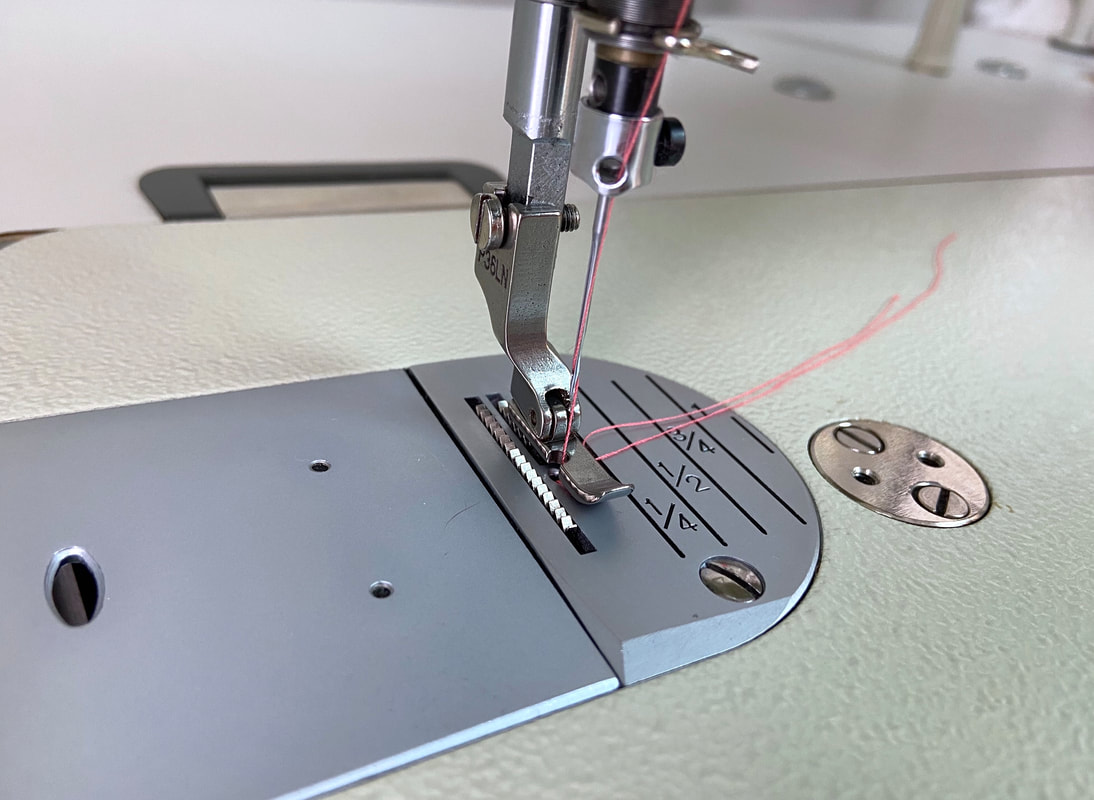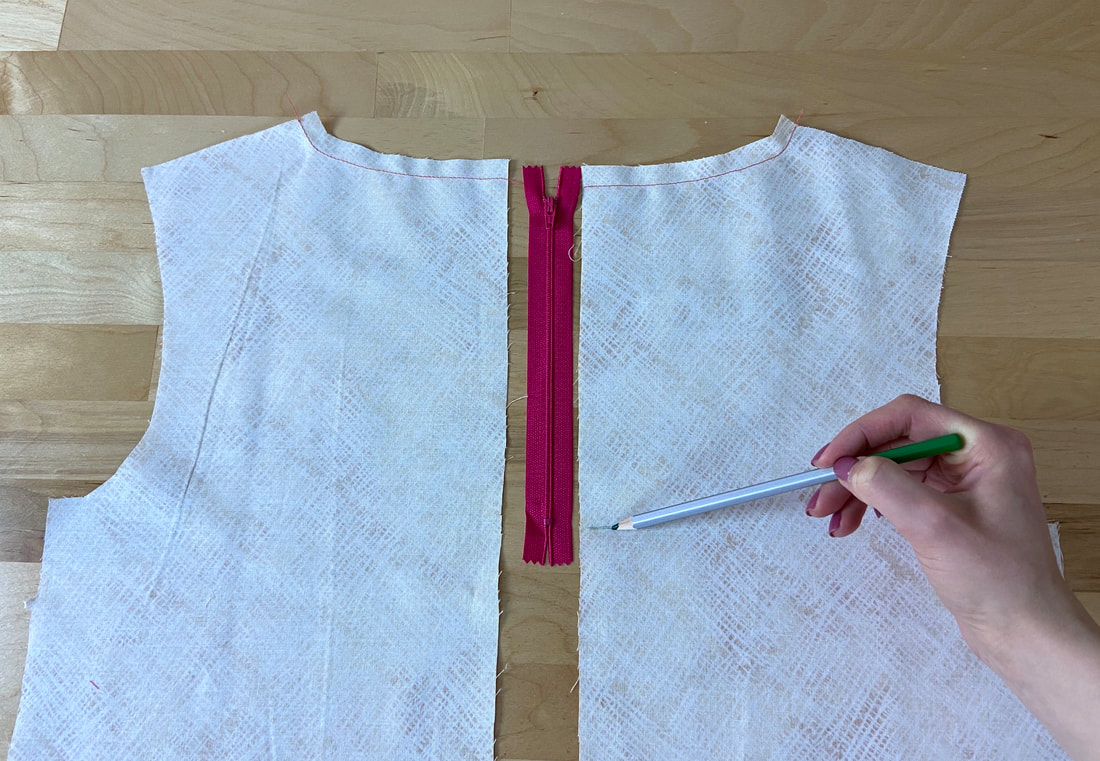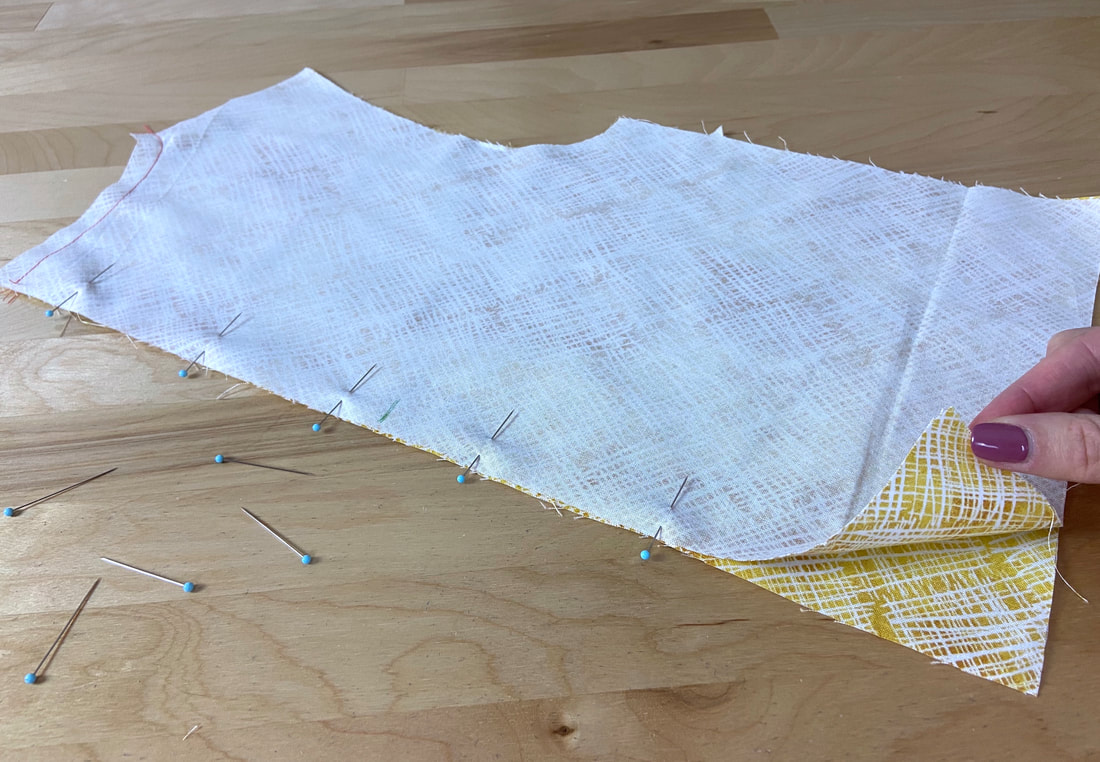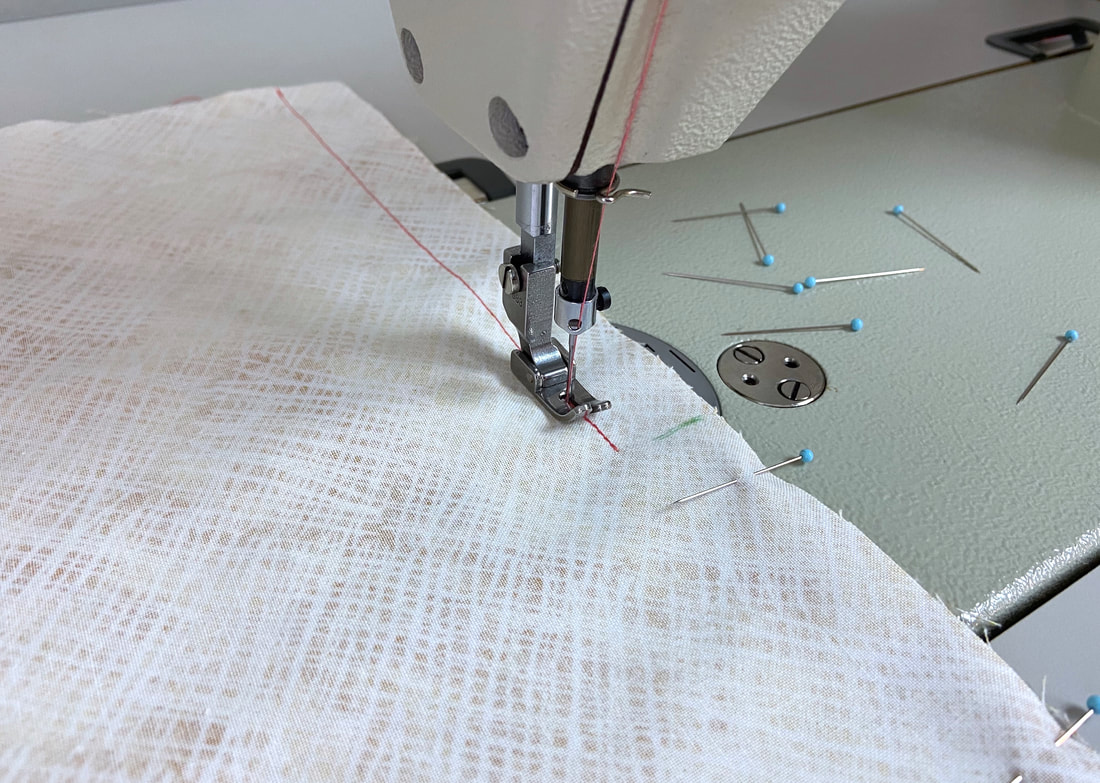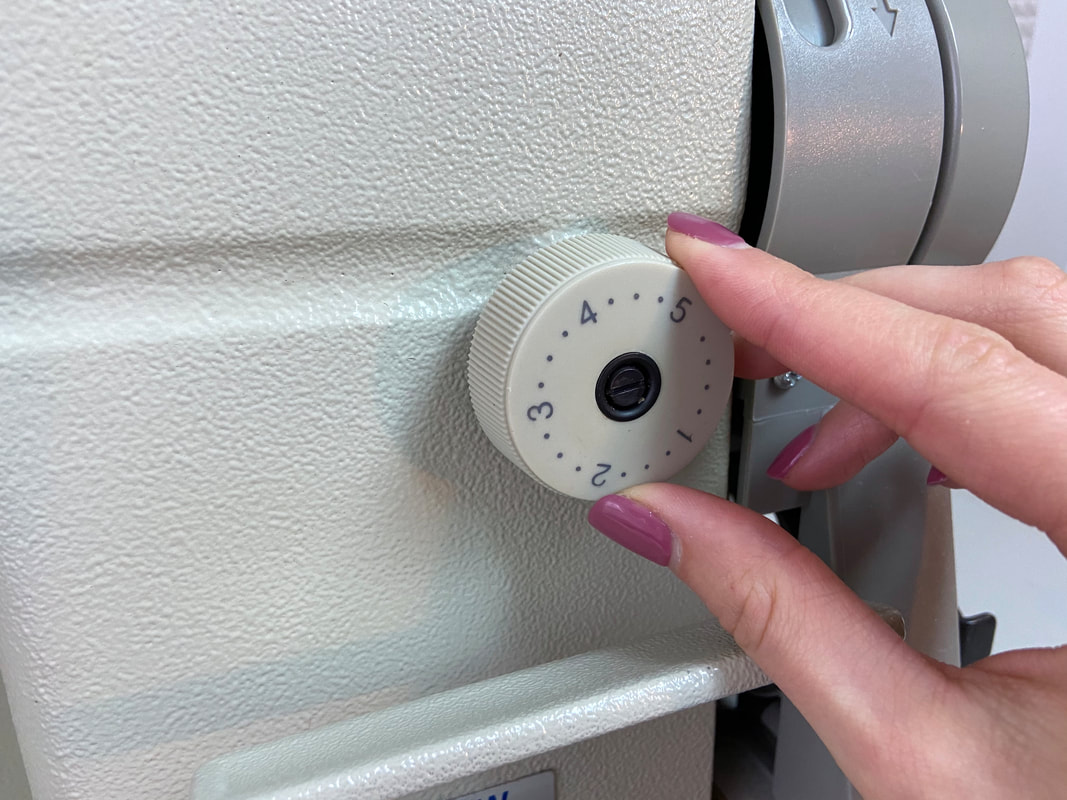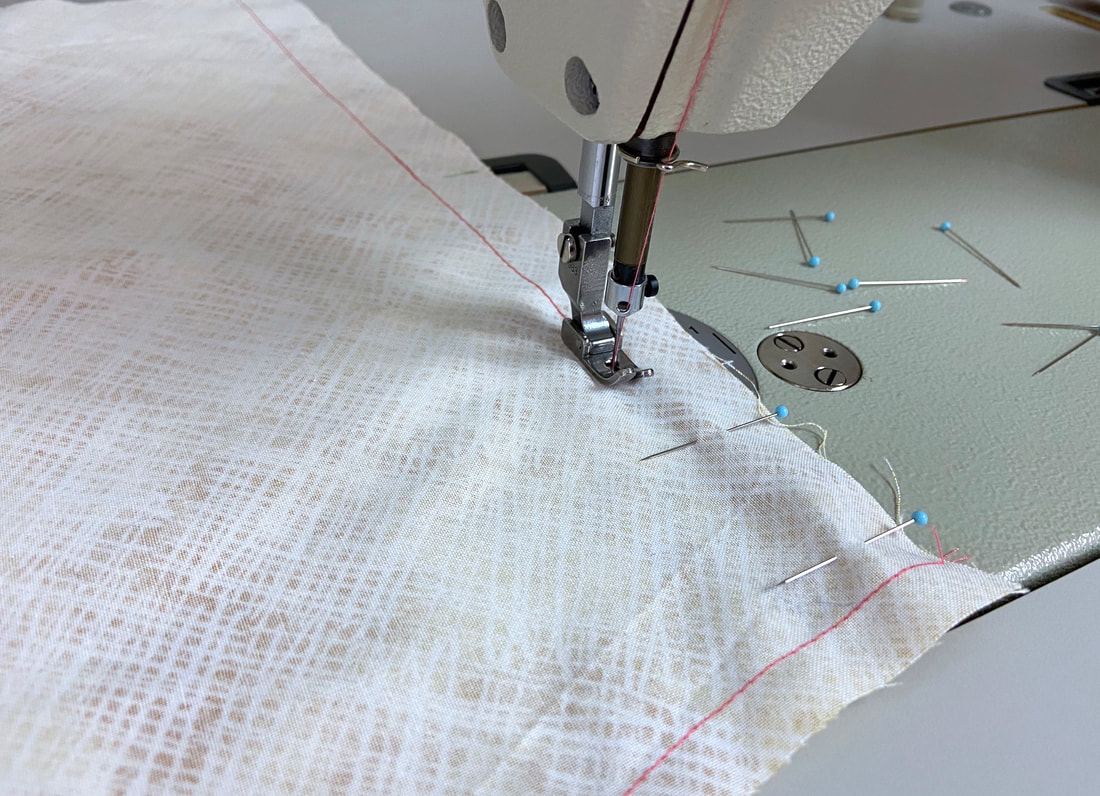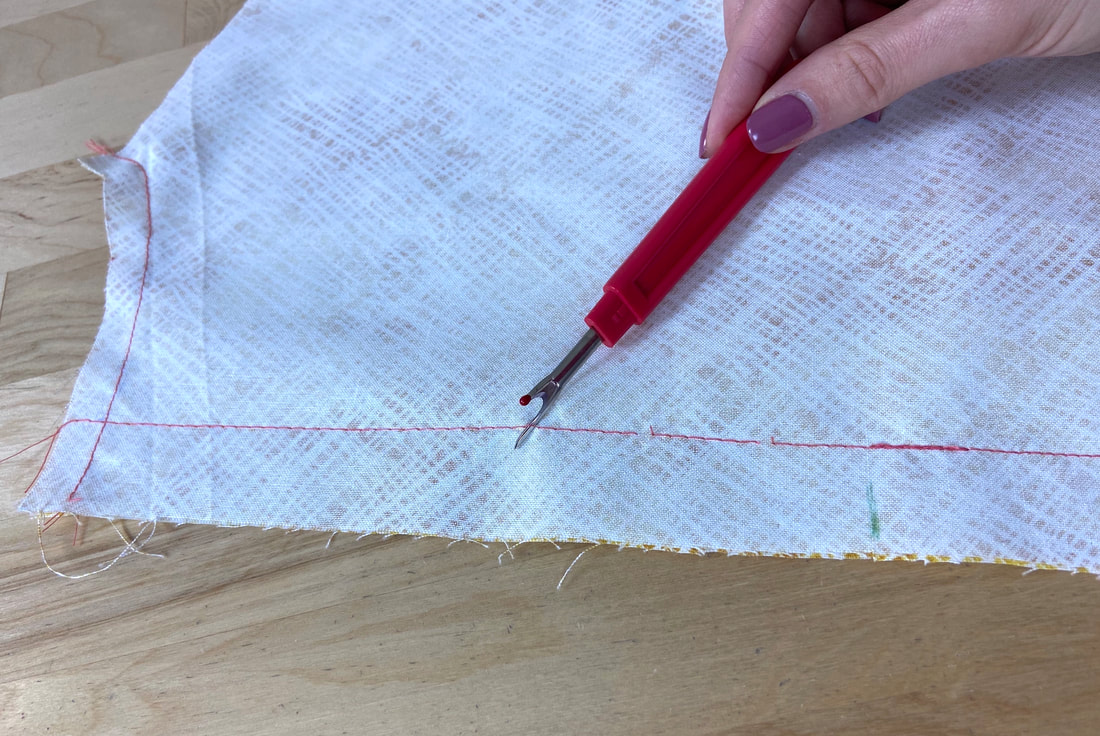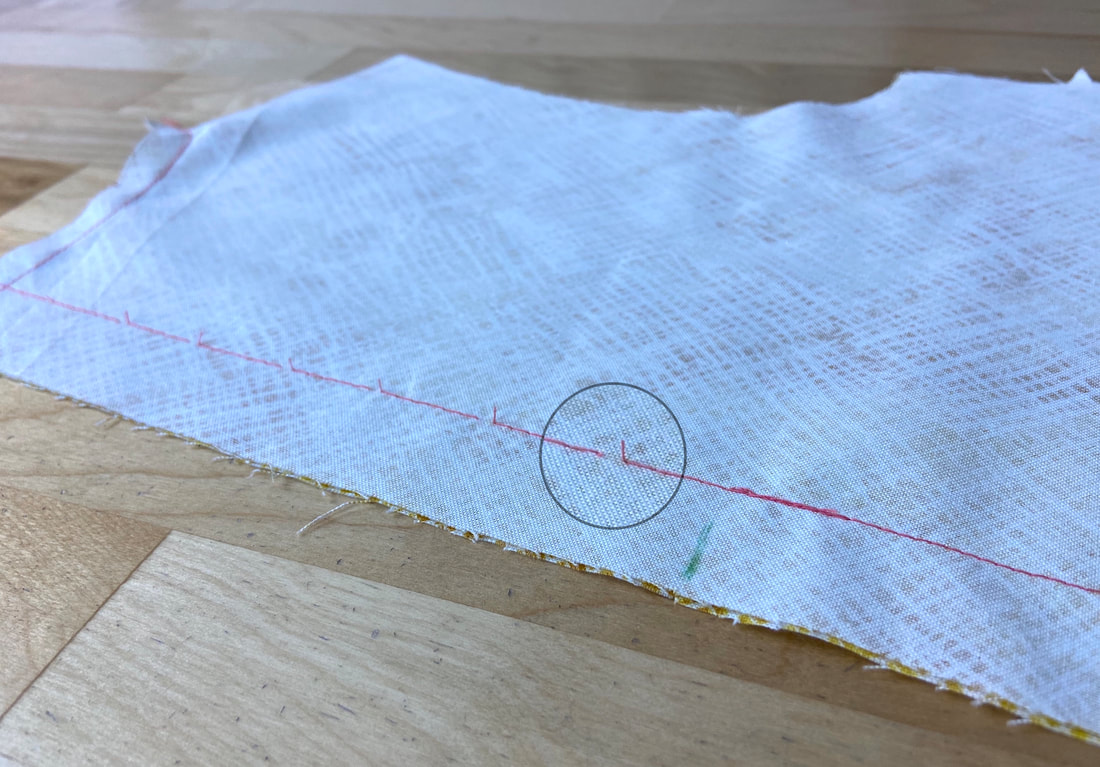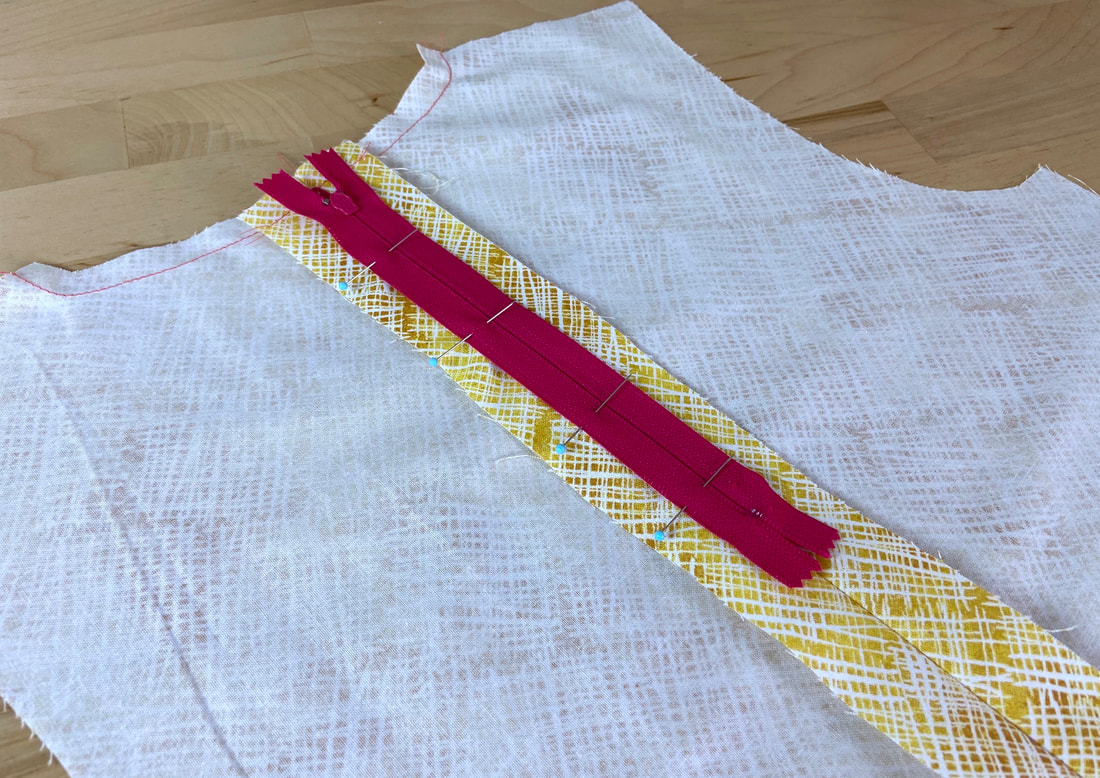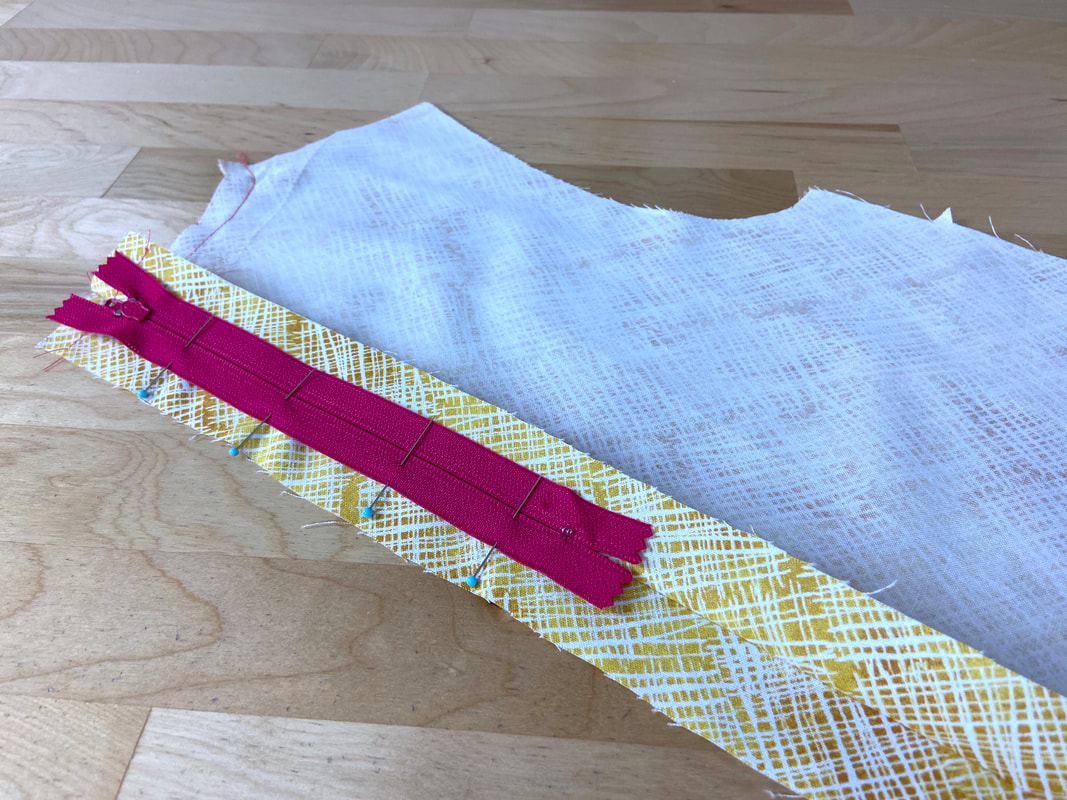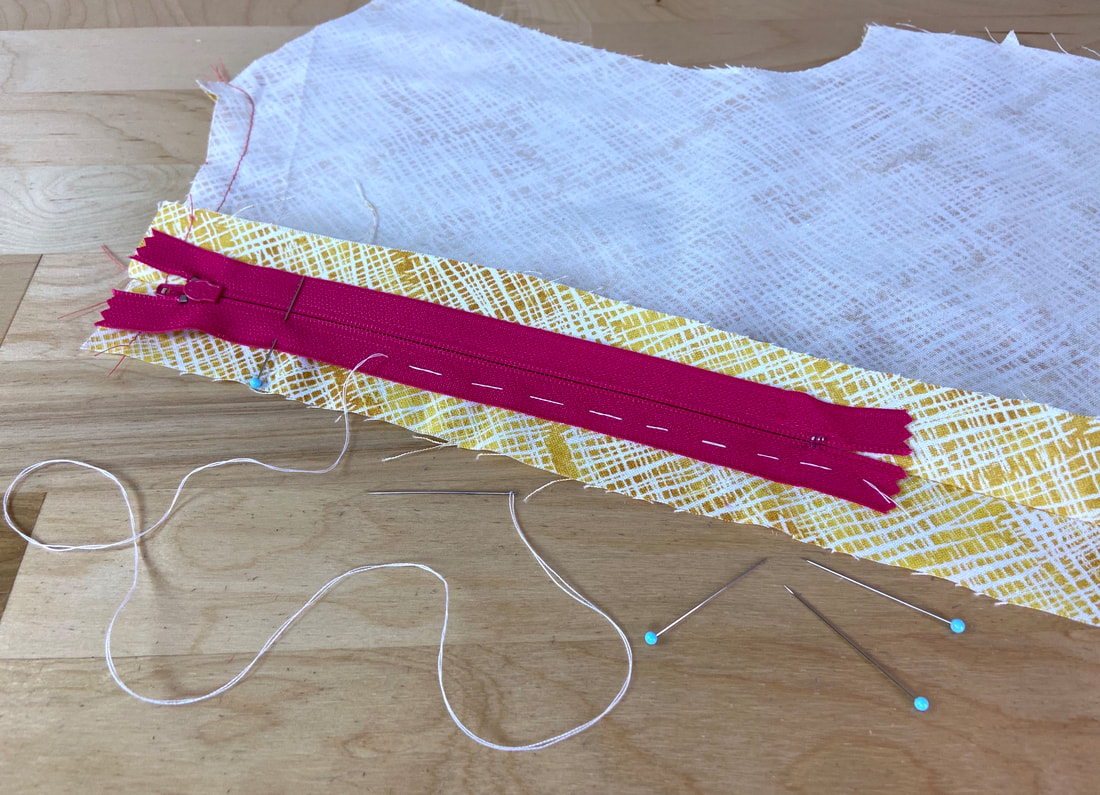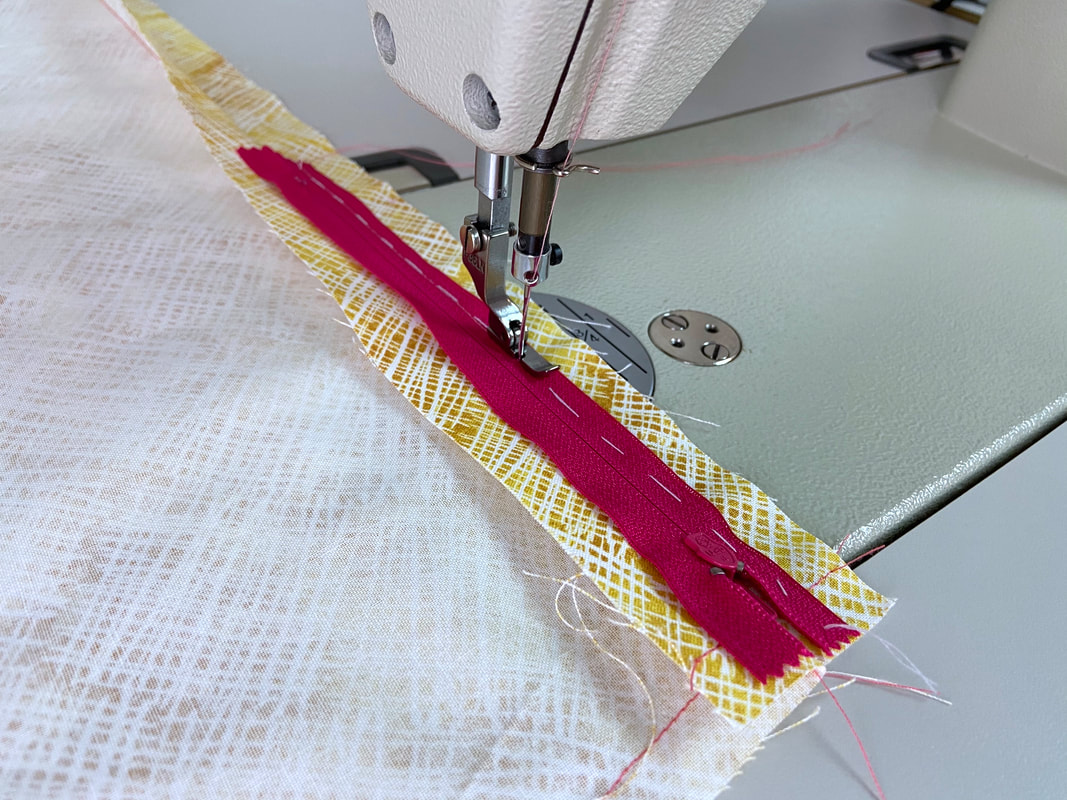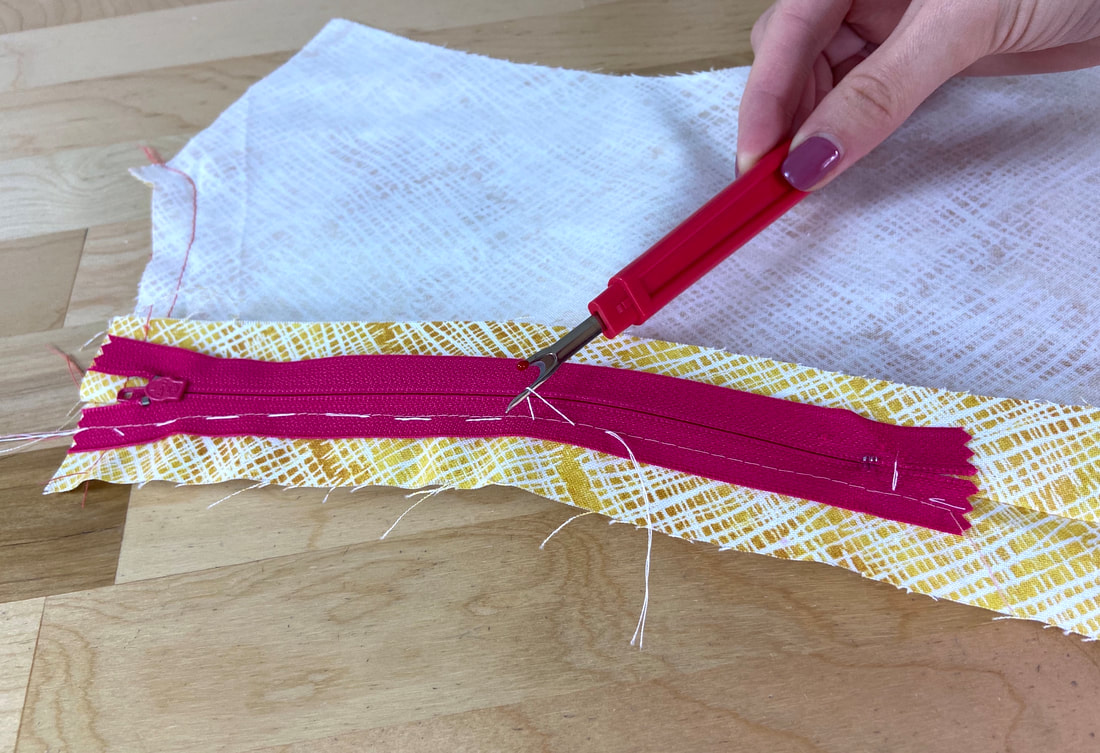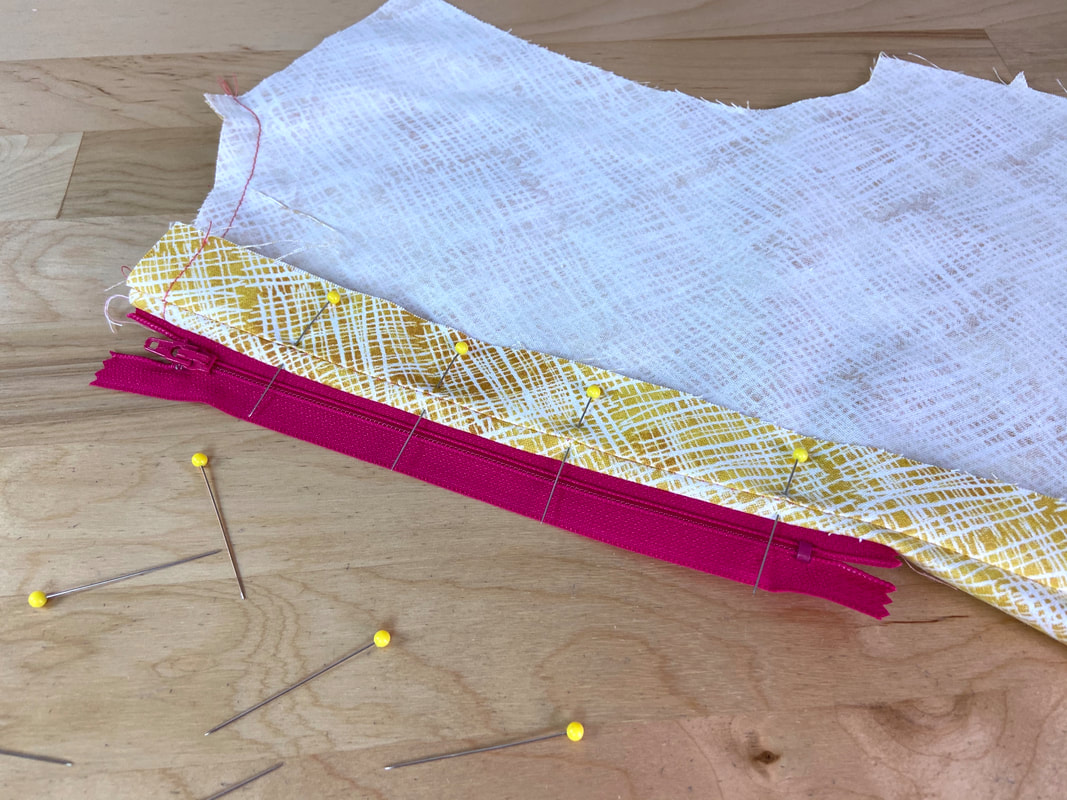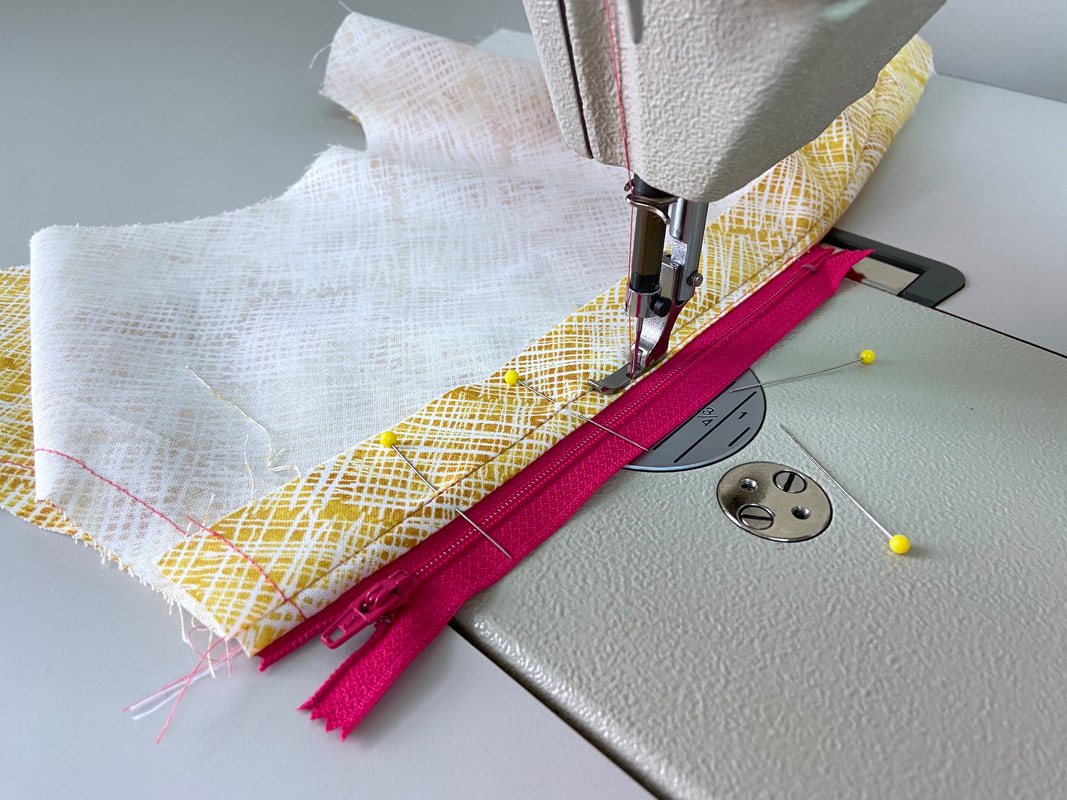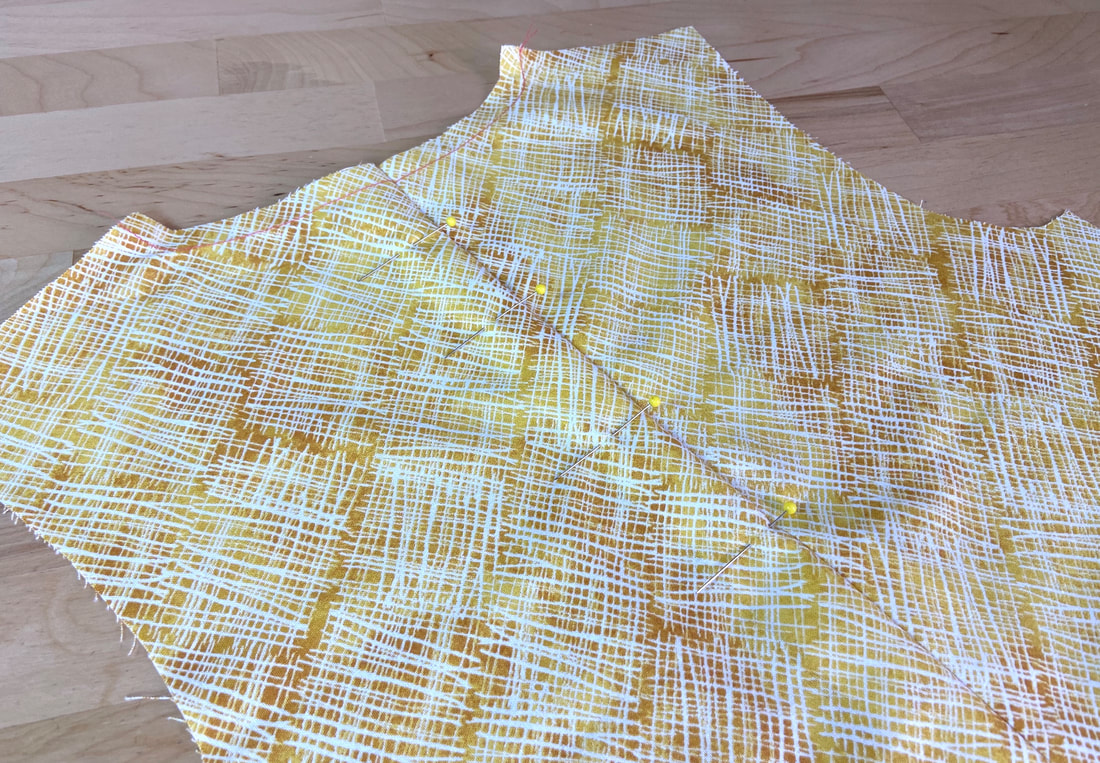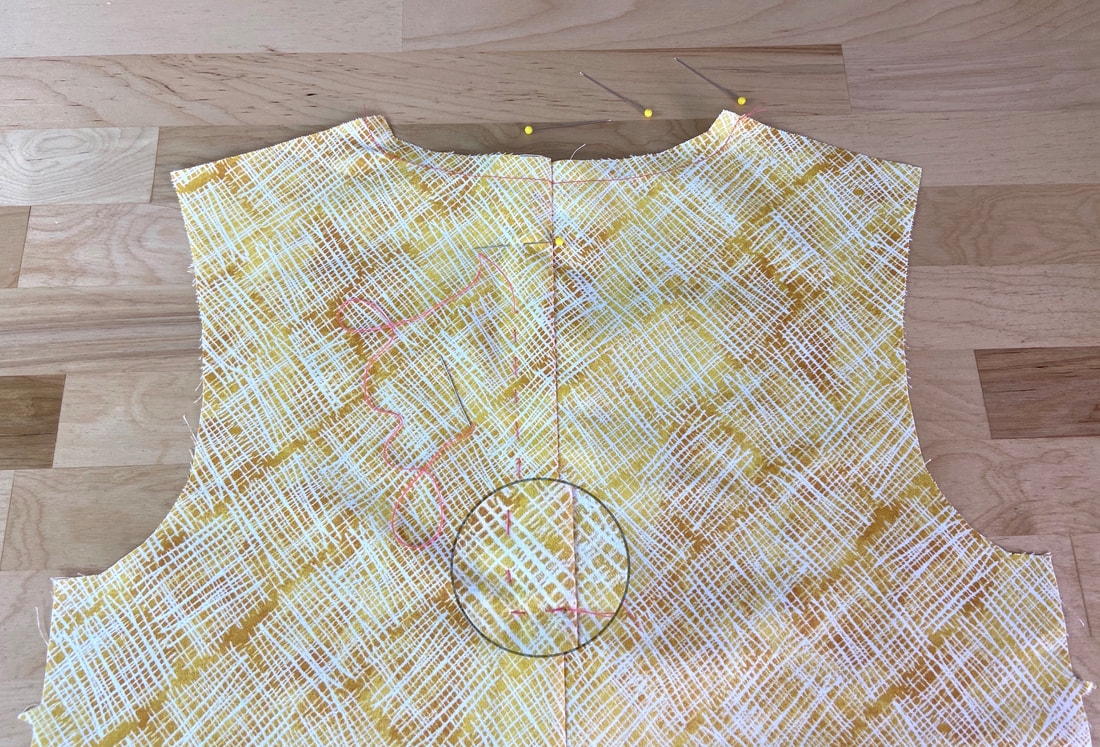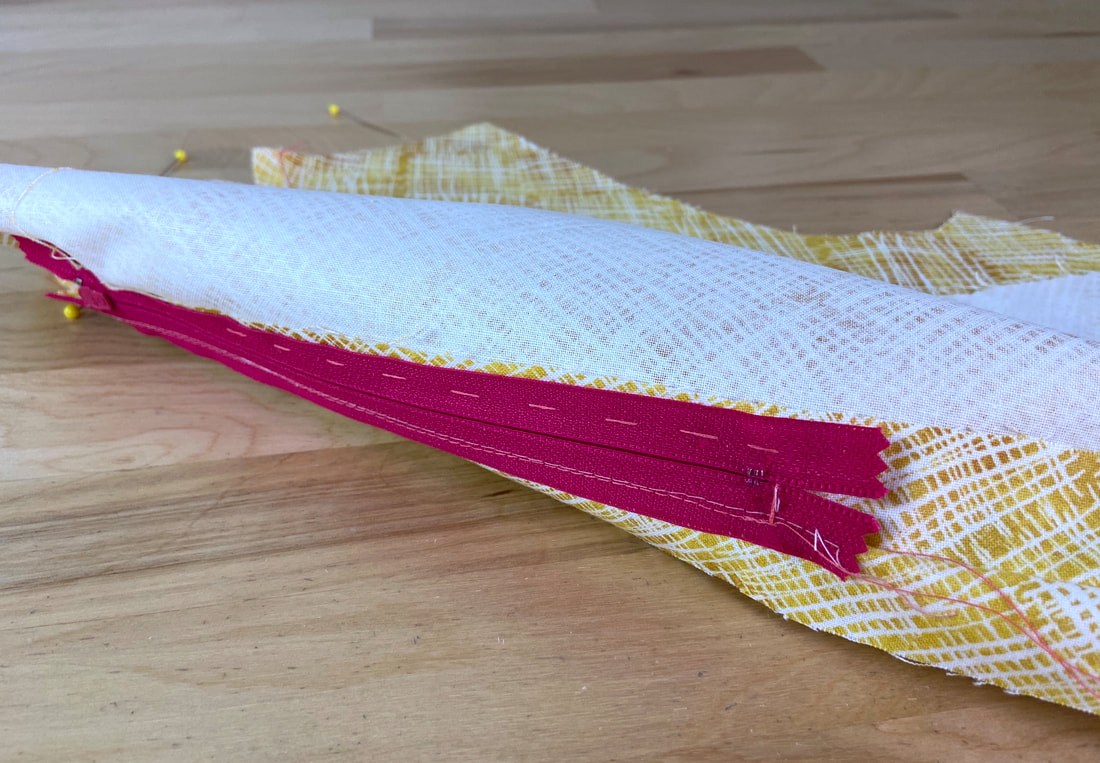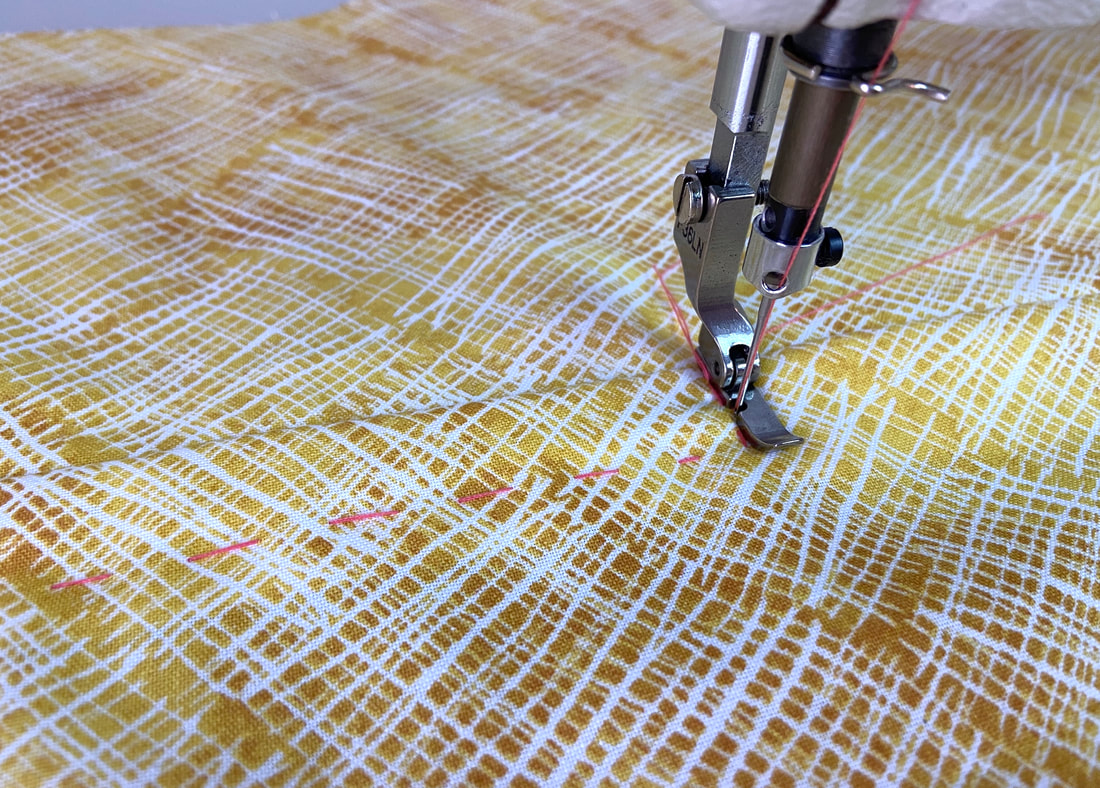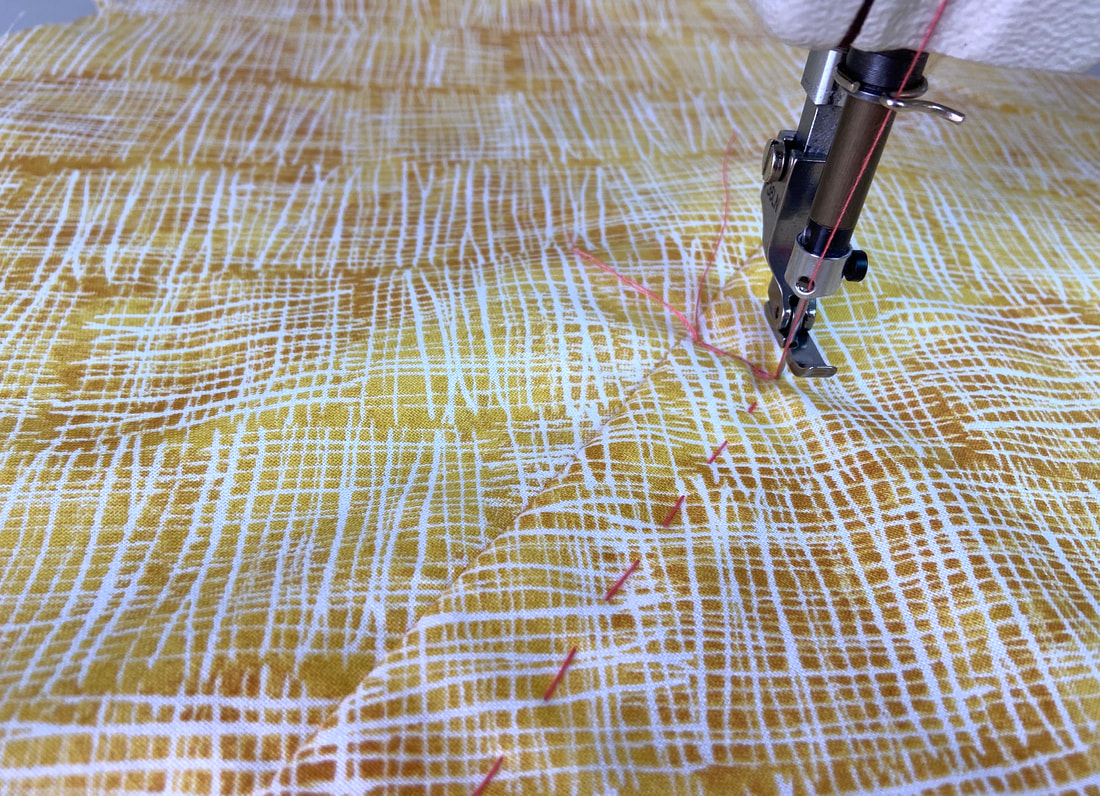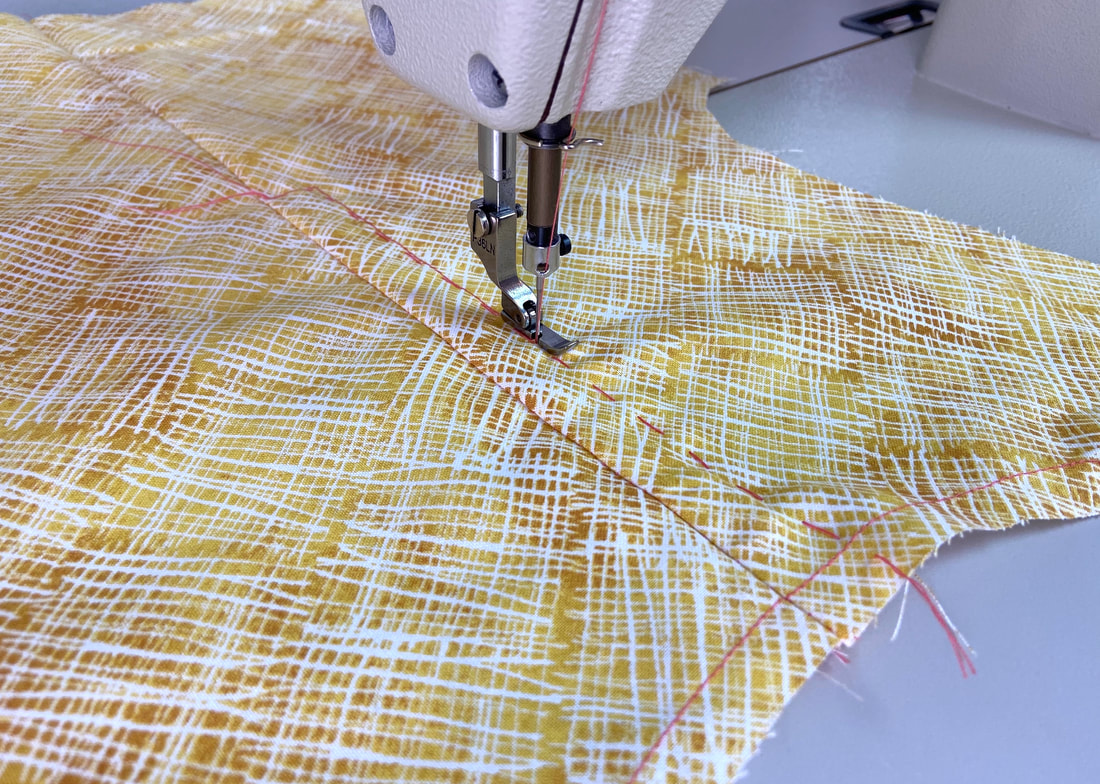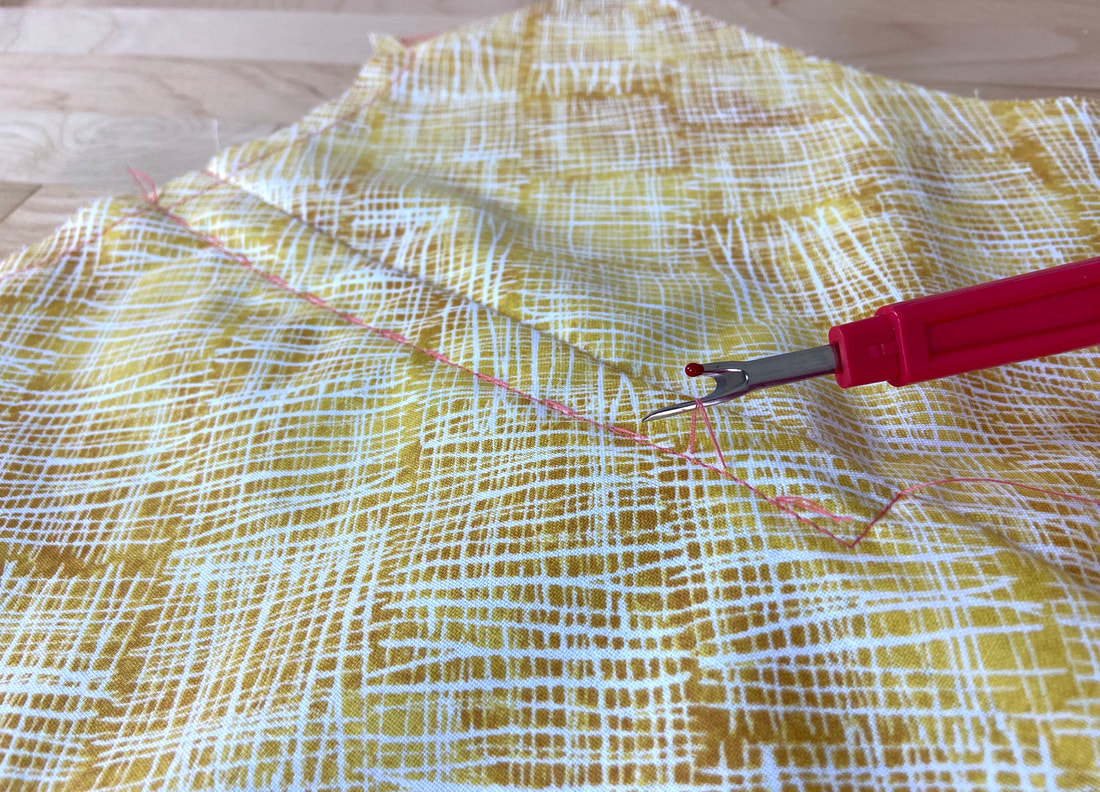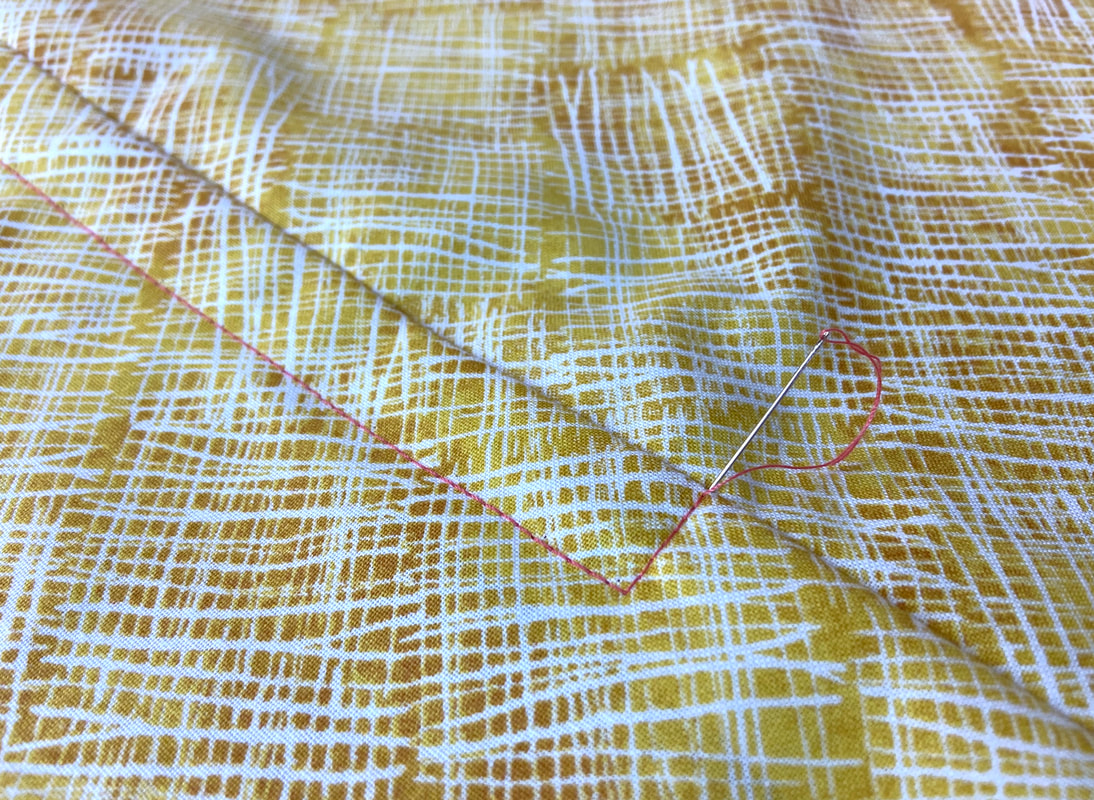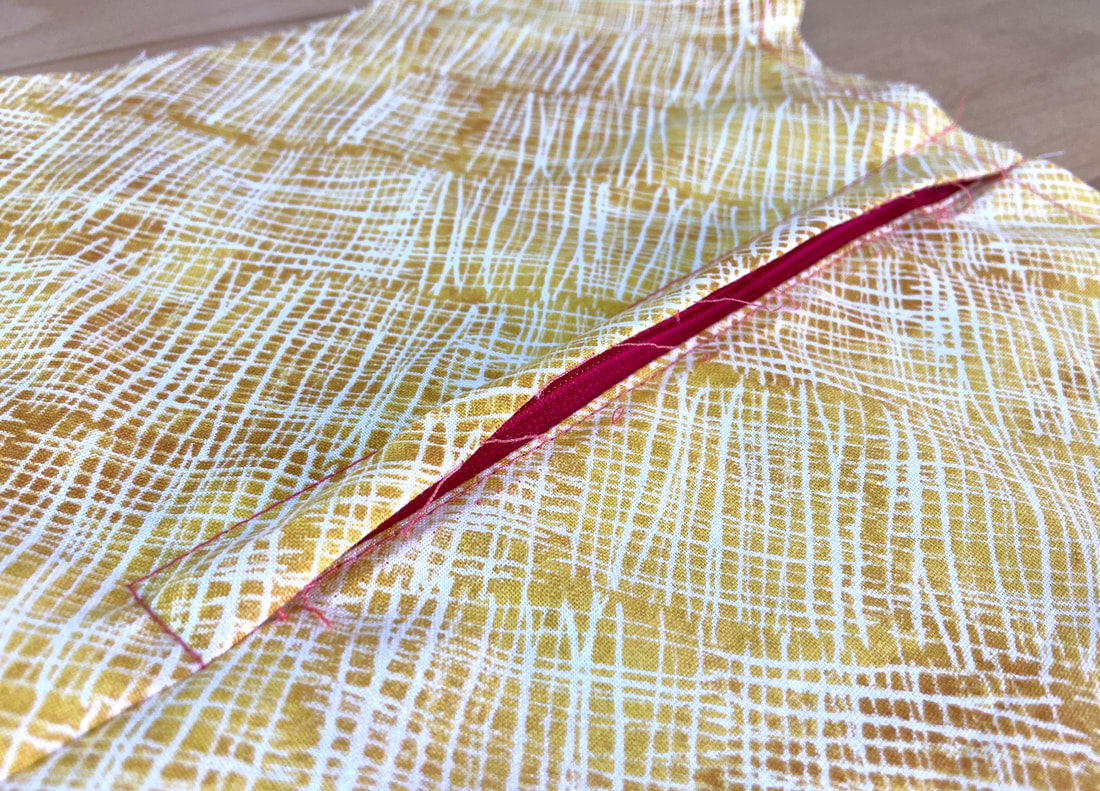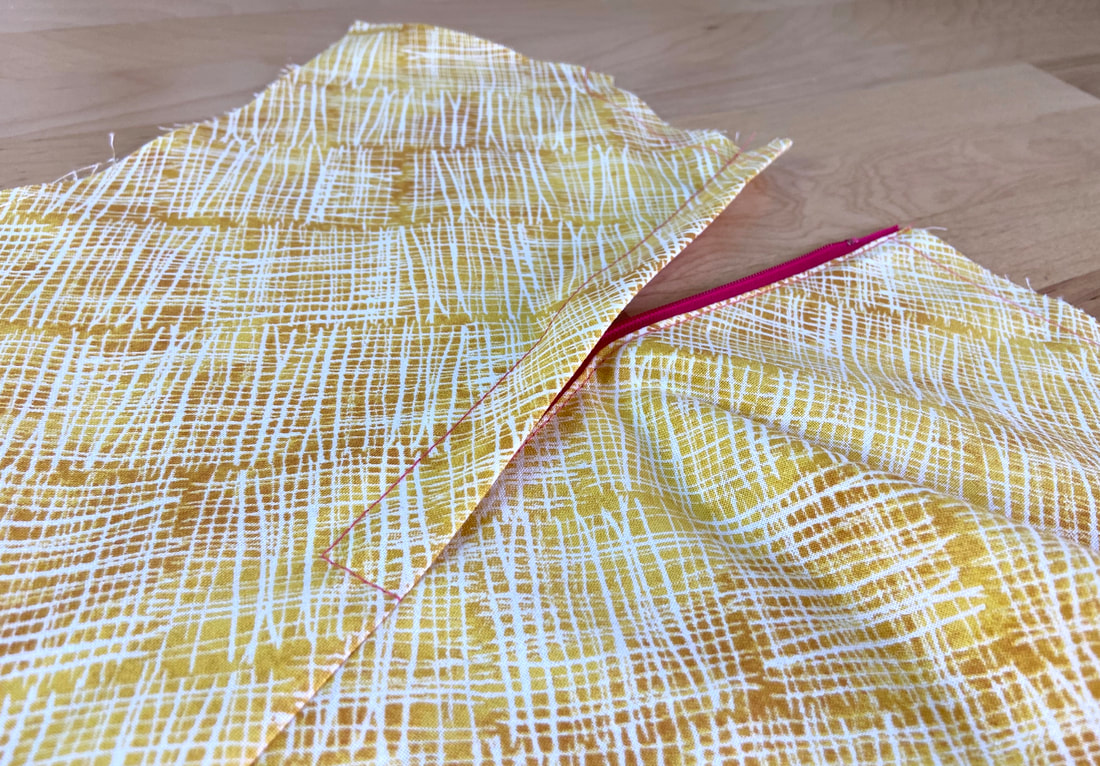What Is A Lapped Zipper
A lapped zipper is one of the most common zipper applications. It is perhaps the best zipper technique for beginners to learn how to sew first.
Similar to a centered zipper, a lapped zipper has topstitching visible on the face of the garment. However, instead of the topstitching being positioned on both sides of the zipper, it is only applied to the left of it. This stitch placement naturally allows for comfortable right-hand zipping and unzipping.
A lapped zipper application can be used on the center back and side seams of both tops and bottoms, including dresses, blouses, trousers and skirts. It can also be used with a separating zipper to form a front opening style.
A lapped zipper style is most suitable for medium-to-heavy weight fabrics that have enough structure to withstand the zipper placket. Keep in mind that fine, flimsy or sheer fabrics may not work well with a lapped zipper application. For these textiles, an invisible zipper will provide best results both functionally and aesthetically.
Learn how to sew an invisible zipper by following the steps in this tutorial: Sewing An Invisible Zipper
The best seam allowance for a flawless lapped zipper application is 3/4” or 1”. Your patterns will indicate the individual seam allowance needed for the seam housing it. Regardless of which it is, it should be wide enough to allow for easy topstitching and comfortably enclose the zipper underneath.
Completing A Lapped Zipper Application
If not already marked on your sewing patterns, note the location of the zipper on the seam. What matters here is the placement of the zipper stop in relation to the seam’s top edge.
If for example, the top portion of the seam will be finished with a facing, leave about 1/2” of distance from the top (horizontal) seamline to the zipper top stop.
If the garment will not have hook-and-eyes at the top of the zipper application, then the zipper slider should align to the finished top edge. In this case, align the zipper top stop right underneath the garment seamline as shown.
During a lapped application, the zipper should stay closed the entire time. If you can, try to stitch from bottom to top at all times.
A zipper foot like the one pictured above is used throughout the entire lapped zipper application process.
1. Align the zipper with the seam edge and mark the location of the bottom stop, either with tailor’s chalk or a pin.
2. Align and pin the seam layer together as you would with any regular seam: face sides touching, and pins inserted horizontally as shown.
3. Starting from the bottom, stitch the seam at the designated seam allowance- 1” in this case. Stop at the bottom tailor’s chalk mark (Step 1) and backstitch this location.
4. Switch your machine setting to a basting stitch (longest stitch length available). Continue stitching with a basting stitch until you arrive at the top of the seam. Do not backstitch at the end of the stitch.
5. Using a seam ripper, clip every 5-6 basting stitches as shown. As you clip, be careful not to pull the seam apart. It should remain closed throughout.
6. Turn the seam on its wrong side with seam allowance layers facing up. Place the closed zipper face down such that the coils align with the seamline. Align the right zipper tape to the right seam allowance edge. To facilitate machine stitching, move all the garment layer(s) out of the way to one side as shown. Insert pins to keep the layers aligned.
7. Hand baste (if needed) to keep the zipper tape alignment in place.
8. Using a zipper presser foot, baste through the seam allowance and zipper tape layers following the stitching guideline on the tape as shown.
Remove the temporary hand basting at this point.
9. Next, flip the zipper away from the garment such that its face side is exposed. The seam allowance under the stitched zipper tape will naturally fold under.
10. Starting at the bottom and using the zipper presser foot, topstitch along the folded edge formed along the zipper tape. Stitch close to this fold line- about 1/8”. This should be easy to do with a zipper presser foot.
11. Next, turn the entire seam on its right side and flatten out the closed zipper seamline with your hands. Lay it flat on the table. You may need to insert some pins to keep the layers flat.
12. On the left side of the zipper coils, hand baste horizontally starting at the bottom (underneath the bottom zipper stop) and moving away from the coils. Stop at about ½” distance from the coils. Pivot the hand basting up, and stitch along the left side of the zipper coils, through the garment, zipper tape and seam allowance layers underneath.
This hand baste should be in approximate alignment with the tape stitching guideline underneath. This line, of course, isn’t visible from the face of the garment, but if you flip the layers to expose the zipper, you should see the hand basting stitch coming through the zipper tape.
Check that the basting stitch is located along the vicinity of the pre-woven stitching line marked on the tape as shown.
13. Starting at the bottom and stitching horizontally away from the coils, machine topstitch using a regular stitch length. This should be fairly simple if you following the hand basting applied in Step 12 above. Use a zipper presser foot in the process.
When arriving at the pivot point, leave the needle in, lift the presser foot and shift the entire direction of the zipper such that it now aligns lengthwise.
Drop the presser foot and continue stitching next to the hand basting until you arrive at the garment's top edge.
14. Once the topstitch is complete, remove the hand basting with a seam ripper.
15. Using a hand sewing needle, move the threads to the wrong side of the zipper and tie the loose threads to secure.
16. To open the zipper, gently pull the seam edges apart. The clipped machine basting stitches applied in Step 5 will come undone and release the seam. Remove any remaining loose threads.

